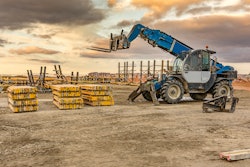
The energy entering a new year often thrives on change, inspiration and advancement. Whether it is your personal resolutions, new corporate goals or shifts in the economy, one thing we can always count on is change. The construction and building safety industry also experiences this new year’s buzz.
Off-site construction is one of the fastest-growing areas of change for the construction industry as technology continues to evolve and building sustainability becomes more important to communities around the world. Off-site construction, or prefabrication, offers benefits including, but not limited to, increased project efficiencies, cost savings, reduced material waste, improved housing affordability and enhanced quality control. It can also help contractors and construction crews avoid common problems such as job site safety issues, inclement weather and unfavorable working conditions.
The International Code Council expects the following trends to drive off-site construction in 2023.
1. More Contractors Will Move to Off-Site Construction Solutions
In 2023, we will see more contractors moving towards off-site construction solutions as supply chain issues, workforce shortages, increased sustainability goals and a potential recession drive the industry to embrace new and more efficient approaches. Whether constructing an entire building off-site or just increasing the degree of component and system integration, we anticipate more contractors will partner with manufacturers and fabricators to prefabricate building components in controlled factory environments.
Contractors are increasingly thinking beyond the first costs of building and are considering benefits such as speed to market, enhanced quality, reduced environmental impacts and improved job site safety. As the off-site construction industry has grown over the years, the documented results of successful projects are undeniable. Project timelines have accelerated by 20-50 percent, with potential for more than 20 percent cost savings, and the lower wastage rates provide both environmental benefits and cost savings.
2. Off-Site Construction Standards Will Help Guide the Industry
As off-site construction solutions continue to spread worldwide, the need for consistent and reliable standards and regulations is essential. In 2023, you will see regulatory approaches become clearer for consumers, homeowners and industry professionals as more states consider the adoption of International Code Council (ICC) and Modular Building Institute (MBI) joint standards to help support consistency and allow for more efficiency within the process.
ICC/MBI Standard 1200 provides requirements for designers, manufacturers, transporters and assemblers to assure off-site construction components are produced under a quality assurance/quality control process and that they can demonstrate compliance with building code requirements. ICC/MBI Standard 1205 addresses the compliance verification process including permitting, in-plant and on-site final inspections, third-party inspections and the role of Industrialized Building Departments, state modular programs and the authority having jurisdiction. The Code Council and MBI are also working towards the development of a third off-site construction standard expected in late 2023: ICC/MBI Standard 1210, which will address requirements for energy efficiency, water conservation and building mechanical, electrical and plumbing systems in off-site projects.
Resources and training opportunities will also become increasingly available to help educate those interested in off-site construction solutions and their regulations. With reinforced consistency and an understanding of how codes and standards address different off-site construction types, code officials will better understand the regulations. One such resource is the Code Council’s Primer on Off-Site Construction, Codes, Standards and Compliance which describes different types of off-site construction projects and the applicable regulatory approaches.
3. Panelization and Multi-Trade Components Will Jumpstart More Off-Site Projects
Despite recognizing the benefits of off-site construction, many industry professionals will not be ready to dive headfirst into this alternative construction approach in 2023. Instead, developers and contractors may need to dip their toes into the market by first focusing on higher degrees of componentization than they have done in prior projects. Consequently, panelization and multi-trade components will become the gateway to increased off-site construction strategies.
Panelized systems or multi-trade components focus on transferring on-site construction activities into a factory setting to help produce higher quality, more consistent products and reduce on-site labor. This is often a low-risk approach that also reduces on-site waste while offering decarbonization benefits. With nearly 30 percent of all building materials delivered to a construction site ending up as waste and the possibility of off-site constructed projects providing embodied carbon savings of up to 45 percent, this can create substantial sustainability benefits to communities worldwide.
Off-Site Construction is Here to Stay
It is important to understand the off-site construction trends coming to the construction industry so you can stay ahead of the game. With the increasing popularity of off-site solutions, understanding the many benefits and limitations can help industry professionals, as well as consumers and homeowners, make more informed decisions regarding the design, construction and management of buildings. These anticipated trends in 2023 will coax the building industry towards greater adoption of off-site construction practices and ultimately confront the multiple challenges it faces today.


















